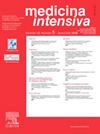Experiencia con soporte de oxigenación con membrana extracorpórea en América Latina entre 2016 y 2020
IF 3.1
4区 医学
Q2 CRITICAL CARE MEDICINE
引用次数: 0
Abstract
Objective
To document the experience with ECMO therapy in healthcare institutions across Latin America between 2016 and 2020.
Design
Cross-sectional study.
Setting
Private and public health institutions from 7 countries.
Participants
ECMO intensive care units.
Interventions
None.
Main variables of interest
General characteristics of the center (country, ELSO center, year of first cannulation, public or private network, ECMO devices available, mobile ECMO), professional category (nurses, physicians, specialists and other professionals), nurse-to-patient ratio, interventions applied (support indications, scores, mechanical ventilation at ECMO commencement, anticoagulation and hemolysis, circuit monitoring and patient perfusion, antibiotic prophylaxis), and patient outcomes (complications and survival) in ECMO centers.
Results
Thirteen ECMO units were included. These units reported 133 consoles and 1,629 ECMO cannulations. Of these, 1,018 corresponded to adult patients, 468 to pediatric patients, and 143 to newborn infants. A total of 310 medical specialists were involved in ECMO care, of whom 70.3% had received ECMO training. The nurse-to-patient ratio was 1:1 in most centers (76.9%, n = 10). Amongst adult patients, the most common indication for initiating ECMO support was refractory hypoxemia, whereas in pediatric patients, it was a post-cardiotomy shock. The mean overall survival rate of the patients at the time of decannulation was 55.7% (95%CI: 53.0-58.3).
Conclusions
The ICUs with ECMO in Latin America participating in this study have demonstrated operational capabilities enabling them to achieve outcomes comparable to those of other ECMO units across the world.
2016年至2020年在拉丁美洲使用体外膜辅助氧气的经验
目的记录2016年至2020年拉丁美洲医疗机构ECMO治疗的经验。DesignCross-sectional研究。7个国家的私人和公共卫生机构。关注的主要变量:中心一般特征(国家、ELSO中心、首次插管年份、公共或私人网络、可用ECMO设备、移动ECMO)、专业类别(护士、医生、专科医生和其他专业人员)、护士与患者比例、采用的干预措施(支持指征、评分、ECMO开始时机械通气、抗凝和溶血、ECMO中心的电路监测和患者灌注,抗生素预防)和患者结局(并发症和生存)。结果共纳入13个ECMO单元。这些单位报告了133个控制台和1,629个ECMO插管。其中,成人患者1018例,儿科患者468例,新生儿143例。共有310名医学专家参与体外氧合治疗,其中70.3%接受过体外氧合培训。大多数中心的护患比为1:1 (76.9%,n = 10)。在成人患者中,启动ECMO支持的最常见适应症是难治性低氧血症,而在儿科患者中,它是开心术后休克。拔管时患者平均总生存率为55.7% (95%CI: 53.0 ~ 58.3)。拉丁美洲参与本研究的ECMO icu已显示出操作能力,使其能够实现与世界各地其他ECMO单位相当的结果。
本文章由计算机程序翻译,如有差异,请以英文原文为准。
求助全文
约1分钟内获得全文
求助全文
来源期刊

Medicina Intensiva
CRITICAL CARE MEDICINE-
CiteScore
2.70
自引率
20.00%
发文量
146
审稿时长
33 days
期刊介绍:
Medicina Intensiva is the journal of the Spanish Society of Intensive Care Medicine and Coronary Units (SEMICYUC) and of Pan American and Iberian Federation of Societies of Intensive and Critical Care Medicine. Medicina Intensiva has become the reference publication in Spanish in its field. The journal mainly publishes Original Articles, Reviews, Clinical Notes, Consensus Documents, Images, and other information relevant to the specialty. All works go through a rigorous selection process. The journal accepts submissions of articles in English and in Spanish languages. The journal follows the publication requirements of the International Committee of Medical Journal Editors (ICMJE) and the Committee on Publication Ethics (COPE).
 求助内容:
求助内容: 应助结果提醒方式:
应助结果提醒方式:


